BFSI Insights
Agentic AI insights for executives, professionals, and researchers in banking, financial services and insurance.
Latest
-
Key Tax Issues at Year End for Real Estate Investors
Published 12 Dec 2025 · pwc
PwC highlights year-end tax planning opportunities for real estate investors including depreciation timing and portfolio restructuring.
executive -
Global Insurance Run-off Survey
Published 12 Dec 2025 · pwc
PwC survey examines insurance run-off market trends, capital requirements, and regulatory challenges across global jurisdictions.
executive global -
Global M&A trends in financial services: 2025 outlook
Published 12 Dec 2025 · pwc
PwC identifies key M&A trends for financial services in 2025, including digital transformation drivers and regulatory impacts on deal activity.
executive global -
Global M&A industry trends in real estate: 2025 outlook
Published 12 Dec 2025 · pwc
PwC's 2025 real estate M&A outlook examines sector trends, deal drivers, and market conditions affecting property investment transactions.
executive global -
6th Annual Global Crypto Hedge Fund Report
Published 12 Dec 2025 · pwc
PwC's 6th annual crypto hedge fund survey reveals industry trends across AUM, performance, and regulatory challenges in 2024.
executive global -
Global M&A trends in financial services: 2024 mid-year outlook
Published 12 Dec 2025 · pwc
FS M&A activity declined 15% in H1 2024 vs H1 2023, with deal values down 23%. Interest rate uncertainty drives selective bidding behaviour.
executive global -
Risk and Regulation
Published 12 Dec 2025 · kpmg
KPMG risk and regulation hub provides guidance across banking, insurance, and asset management sectors for compliance professionals.
functional_specialist global -
A Cost-Benefit Analysis of On-Premise Large Language Model Deployment: Breaking Even with Commercial LLM Services
Published 11 Nov 2025 · arXiv
The paper provides a framework for evaluating when deploying large language models (LLMs) on-premise is cost-effective compared to commercial services, considering factors like hardware and operational costs.
functional_specialist global -
Making LLMs Reliable When It Matters Most: A Five-Layer Architecture for High-Stakes Decisions
Published 10 Nov 2025 · arXiv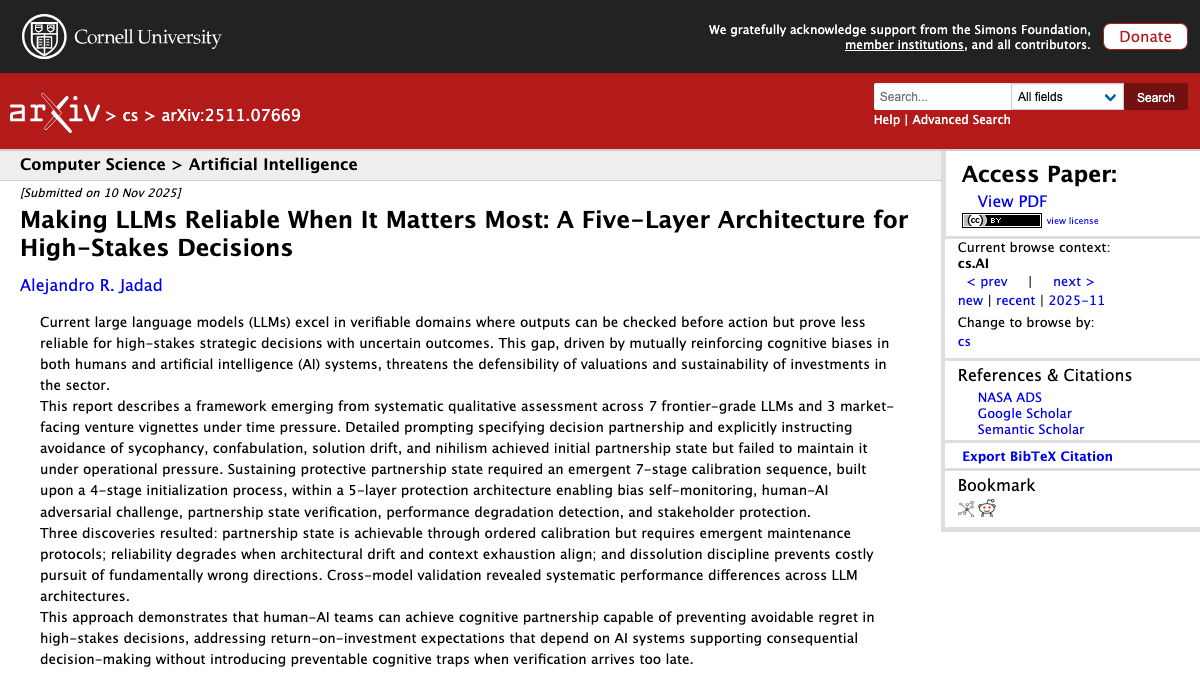
A five-layer architecture enhances the reliability of large language models (LLMs) in high-stakes decisions by addressing cognitive biases and maintaining partnership states.
functional_specialist global -
NVIDIA Nemotron Nano V2 VL
Published 7 Nov 2025 · arXiv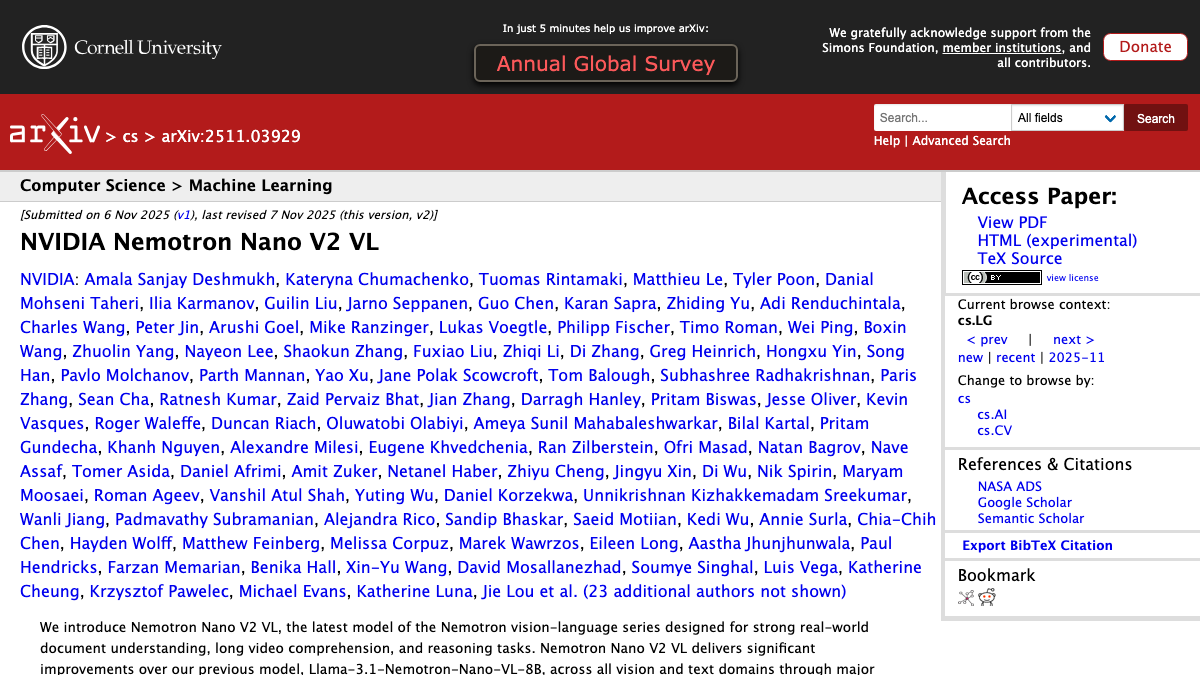
NVIDIA introduces the Nemotron Nano V2 VL, enhancing document understanding and video comprehension through improved model architecture and token reduction techniques.
functional_specialist global -
AIRepr: An Analyst-Inspector Framework for Evaluating Reproducibility of LLMs in Data Science
Published 7 Nov 2025 · arXiv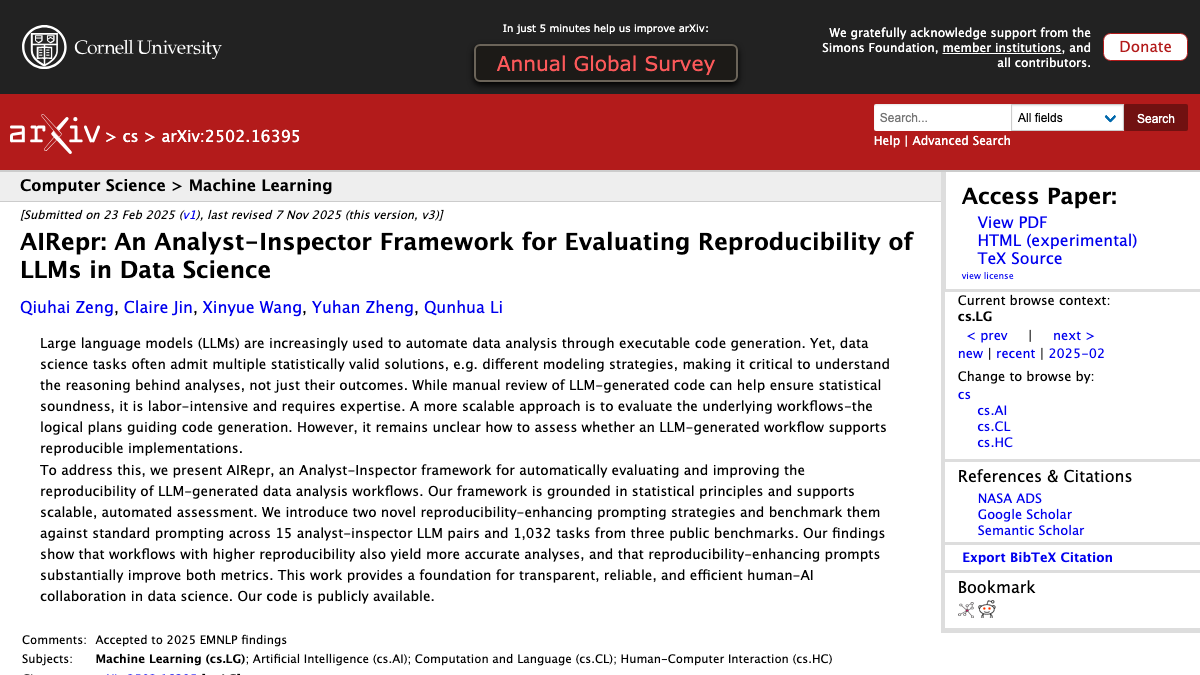
AIRepr is a framework for assessing the reproducibility of LLM-generated data science workflows, enhancing transparency and reliability in human-AI collaboration.
functional_specialist global -
TimeCopilot
Published 7 Nov 2025 · arXiv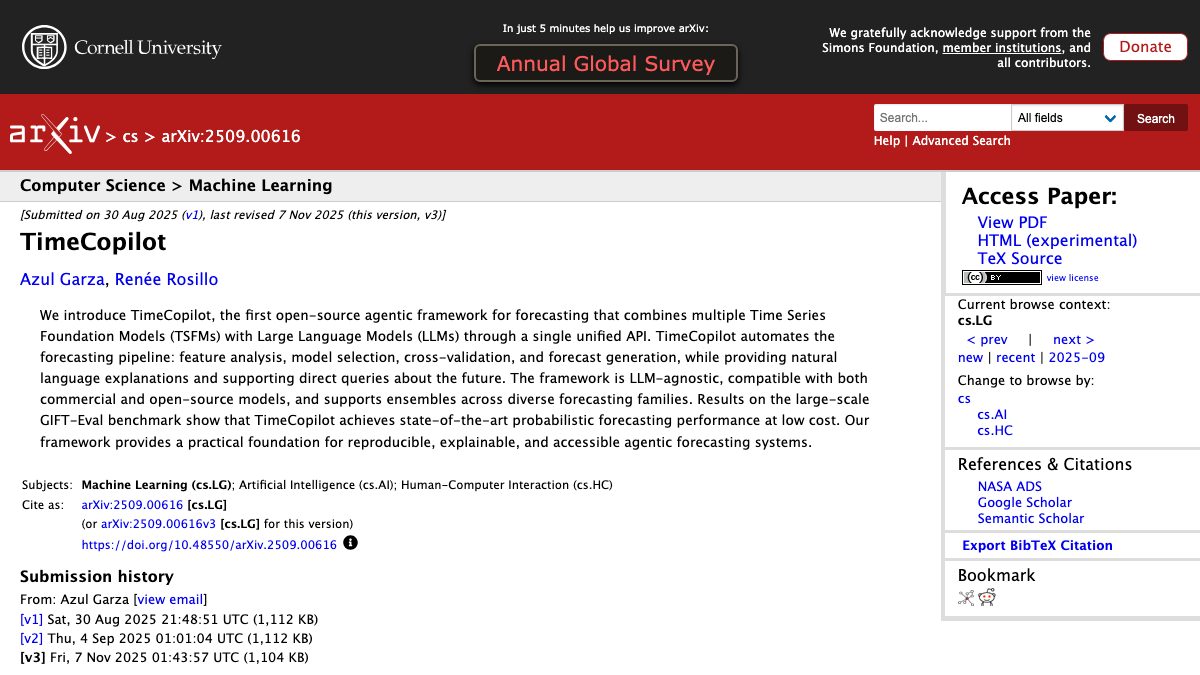
TimeCopilot is an open-source framework that integrates Time Series Foundation Models with Large Language Models for enhanced forecasting, achieving state-of-the-art performance at low cost.
functional_specialist global -
AI agents for cash management in payment systems
Published 26 Nov 2024 · bis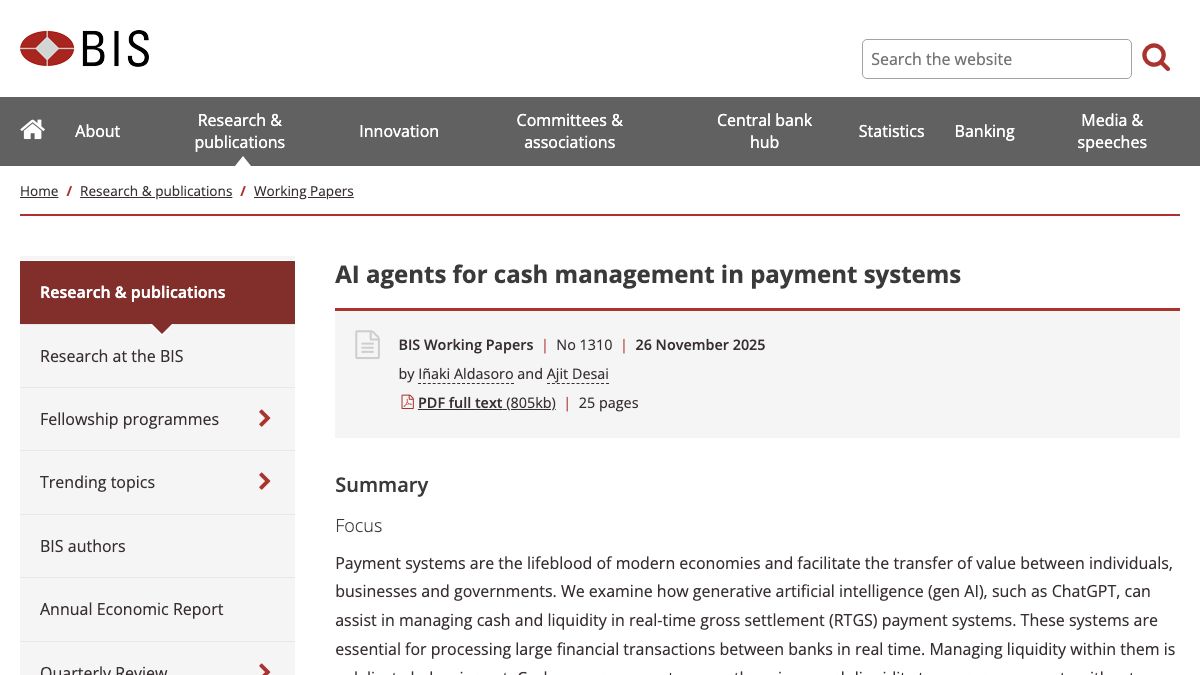
ChatGPT successfully manages bank liquidity in RTGS payment systems without specialized training, replicating key cash management practices.
engineer global -
Regulators announce plans to support growth of mutuals sector
Published 5 Dec 2025 · www.bankofengland.co.uk
The FCA and PRA announced measures to support the mutuals sector, including a new development unit and faster application processes. This aims to double the sector's size, impacting credit unions and building societies.
researcher uk -
Banking system stability: A global analysis of cybercrime laws
Published 1 Dec 2025 · arxiv.org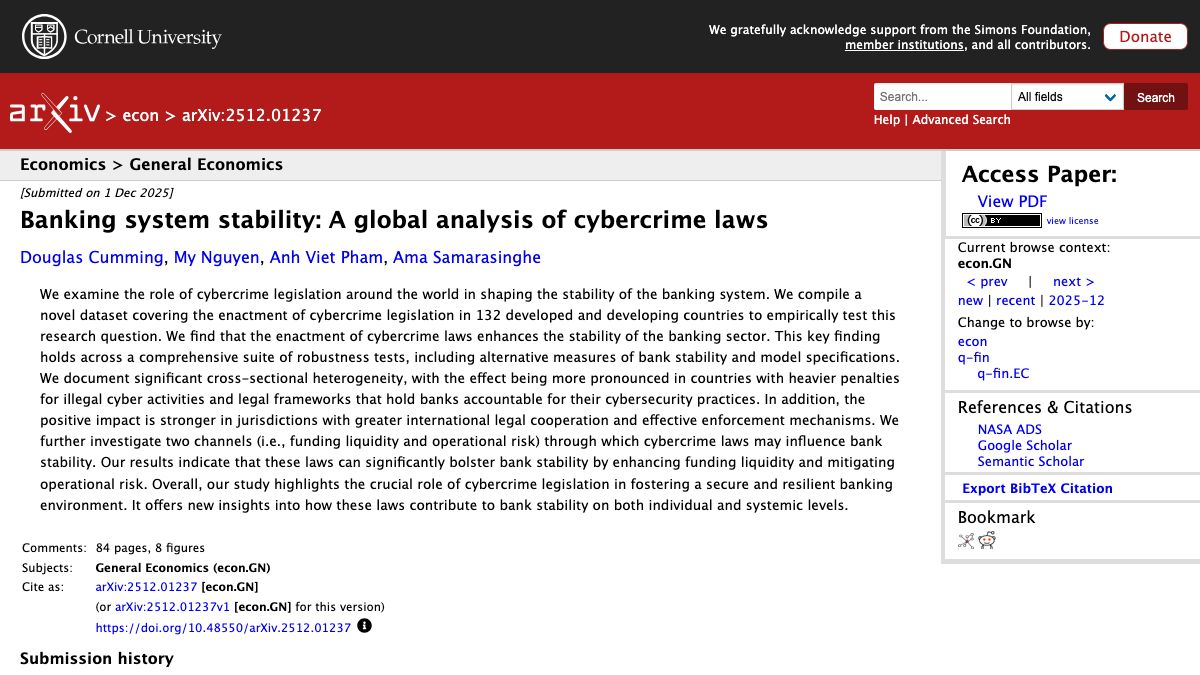
Cybercrime laws enhance banking stability by improving funding liquidity and reducing operational risk, especially in countries with strict penalties and strong enforcement.
researcher global -
Benchmarking LLM Agents for Wealth-Management Workflows
Published 1 Dec 2025 · arxiv.org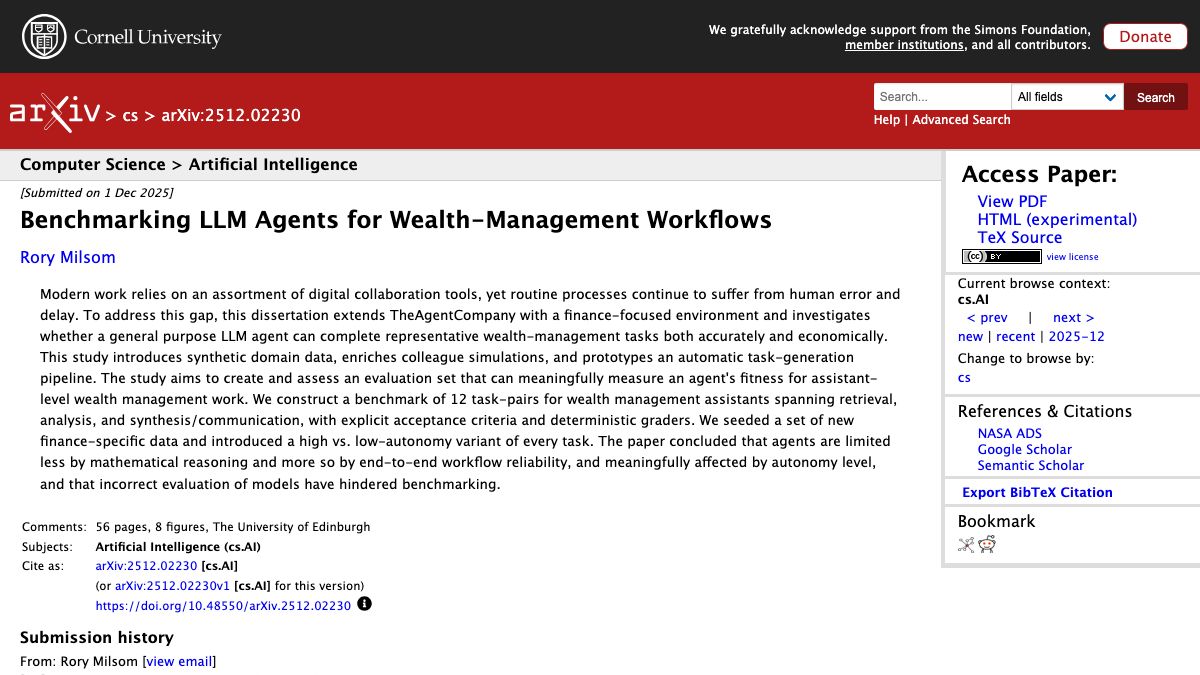
The study benchmarks LLM agents for wealth-management tasks, highlighting limitations in workflow reliability and autonomy impact.
researcher -
Monopoly Pricing of Weather Index Insurance
Published 1 Dec 2025 · arxiv.org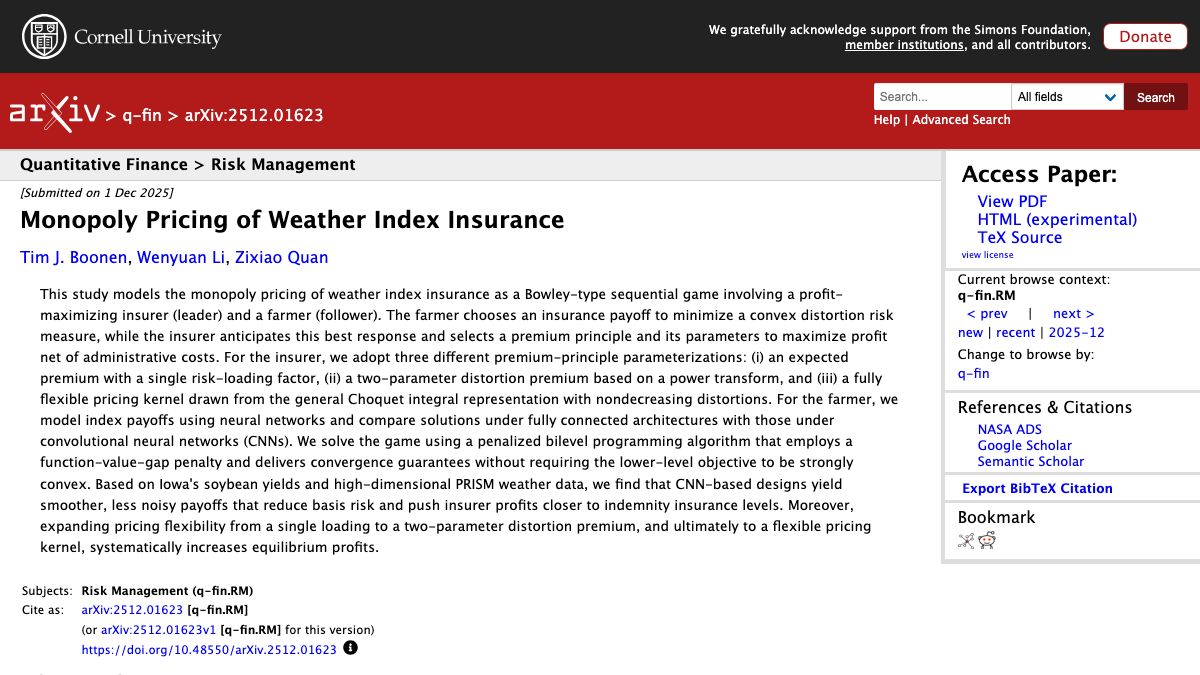
The study models monopoly pricing of weather index insurance using a game-theoretic approach, highlighting how CNN-based designs can reduce basis risk and increase insurer profits.
researcher -
ARCADIA: Scalable Causal Discovery for Corporate Bankruptcy Analysis Using Agentic AI
Published 30 Nov 2025 · arxiv.org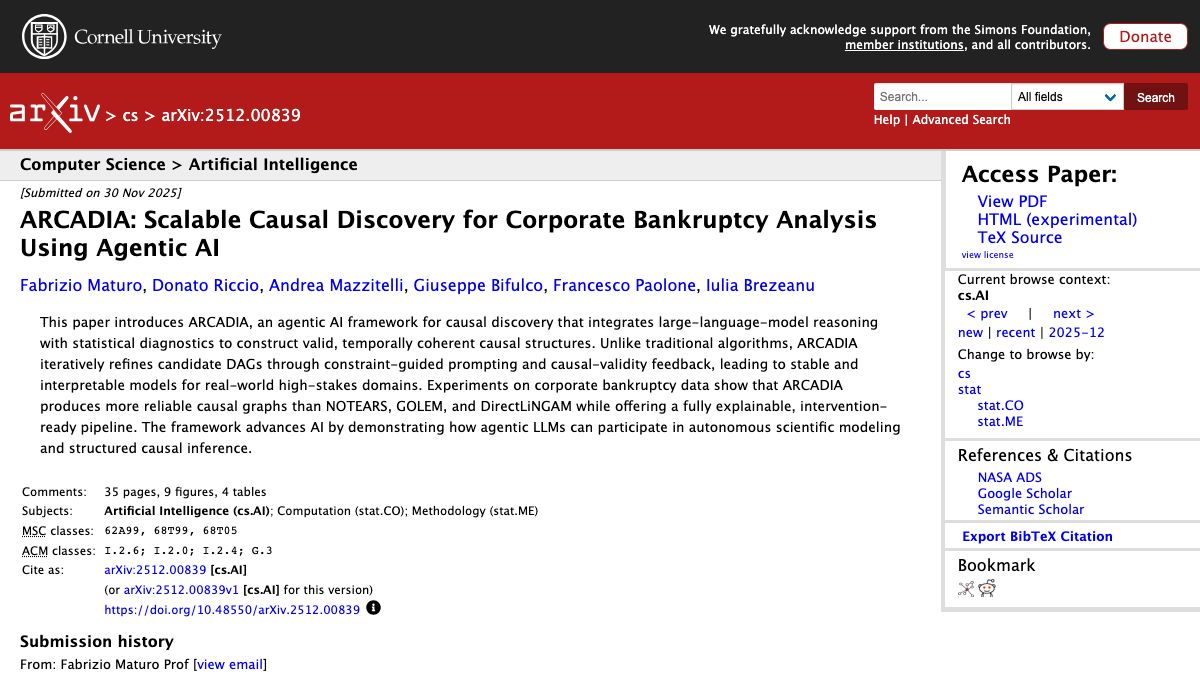
ARCADIA, an AI framework, enhances causal discovery in corporate bankruptcy analysis, outperforming traditional models like NOTEARS and GOLEM.
researcher -
Global Banks' Spillovers to Emerging Markets: Macro to Micro Transmission
Published 30 Nov 2025 · arxiv.org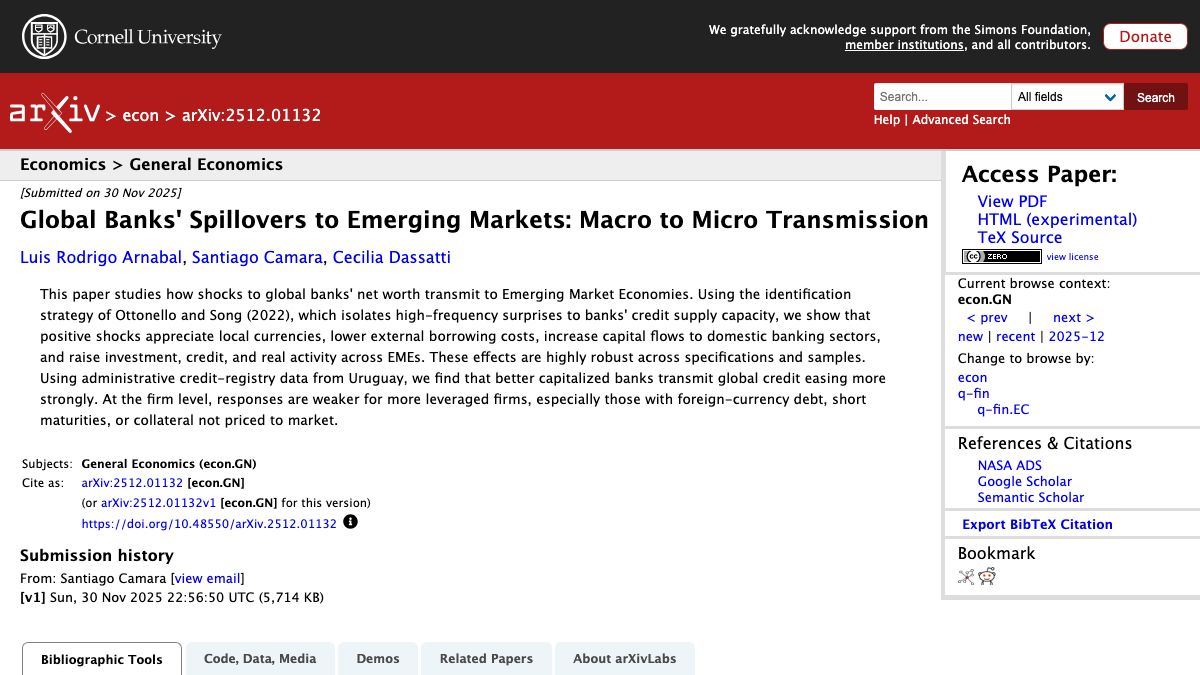
Global banks' net worth shocks affect emerging markets by appreciating local currencies and increasing capital flows, impacting investment and credit. This is crucial for emerging market economies.
researcher global